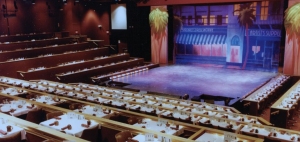The Creative Economy

The word “creative” used to belong predominantly to the right-brain arts community. Lately however, the word has wandered into the left-brain analytical zone. Phrases such as “creative economy,” “creative industries” and “creative class” have crept into the business vernacular. So what’s going on here? Have the economists hijacked creativity? Not at all. The truth is that creativity has become a shared virtue. Take for example the creative industries—those which have their origin in individual creativity, skill and talent, and create wealth by the generation of intellectual property. These can include advertising and architecture as well as museums and theaters. It’s a mix of profit and non-profit. These creative industries seem to proliferate in culturally rich environments…That, is places where culture thrives.
Don’t take my word for it. Take a look at a study by Americans for the Arts, which says the following: “Westchester County, NY is home to 3,085 arts-related businesses that employ 14,493 people. The creative industries account for 5.3 percent of the total number of businesses located in Westchester County, NY and 2.4 percent of the people they employ.”
This puts Westchester on par with creative centers like Miami Dade County, Florida, and Cook County, Chicago, and is well above the national averages. Westchester, in this regard, is only out-flanked by two places: New York City and Los Angeles. That’s a long way around to say that the arts are important economically to our county. Fortunately, our county leadership understands this and they have kept cultural funding alive during this pandemic period. But it’s been a tough time for this creative sector as theaters have been unable to open. The recent announcement of the permanent closing of the venerable Westchester Broadway Theatre (WBT) has sent a chill up the spine of the arts community here. Like many theaters since March, WBT was closed due to Covid. Also closed have been the Tarrytown Music Hall, the Jacob Burns Film Center and the Purchase Performing Arts Center. And so long as the COVID-19 continues, they are all at risk. Our economy is a creative economy. And that’s just one more good reason to support the arts.


Connect with Janet